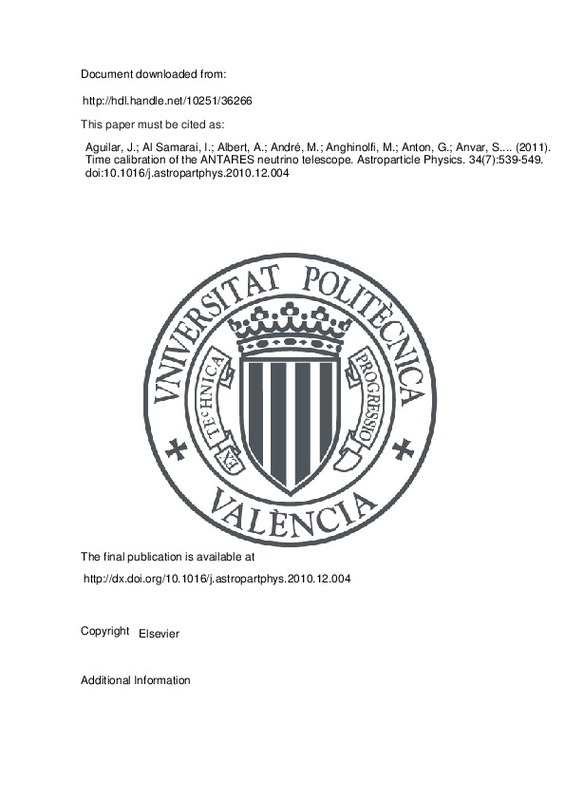JavaScript is disabled for your browser. Some features of this site may not work without it.
Buscar en RiuNet
Listar
Mi cuenta
Estadísticas
Ayuda RiuNet
Admin. UPV
Desde el lunes 3 y hasta el jueves 20 de marzo, RiuNet funcionará en modo de solo lectura a causa de su actualización a una nueva versión.
Time calibration of the ANTARES neutrino telescope
Mostrar el registro completo del ítem
Aguilar, J.; Al Samarai, I.; Albert, A.; André, M.; Anghinolfi, M.; Anton, G.; Anvar, S.... (2011). Time calibration of the ANTARES neutrino telescope. Astroparticle Physics. 34(7):539-549. https://doi.org/10.1016/j.astropartphys.2010.12.004
Por favor, use este identificador para citar o enlazar este ítem: http://hdl.handle.net/10251/36266
Ficheros en el ítem
Metadatos del ítem
| Título: | Time calibration of the ANTARES neutrino telescope | |
| Autor: | Aguilar, J.A Al Samarai, I Albert, A. André, M. Anghinolfi, M. Anton, G Anvar, S. Bou Cabo, Manuel Larosa, Giuseppina | |
| Entidad UPV: |
|
|
| Fecha difusión: |
|
|
| Resumen: |
The ANTARES deep-sea neutrino telescope comprises a three-dimensional array of photomultipliers to detect the Cherenkov light induced by upgoing relativistic charged particles originating from neutrino interactions in the ...[+]
|
|
| Palabras clave: |
|
|
| Derechos de uso: | Reserva de todos los derechos | |
| Fuente: |
|
|
| DOI: |
|
|
| Editorial: |
|
|
| Versión del editor: | http://dx.doi.org/10.1016/j.astropartphys.2010.12.004 | |
| Código del Proyecto: |
|
|
| Agradecimientos: |
The authors acknowledge the financial support of the funding agencies: Centre National de la Recherche Scientifique (CNRS), Commissariat a l'energie atomique et aux energies alternatives (CEA), Agence National de la Recherche ...[+]
|
|
| Tipo: |
|







![[Cerrado]](/themes/UPV/images/candado.png)


